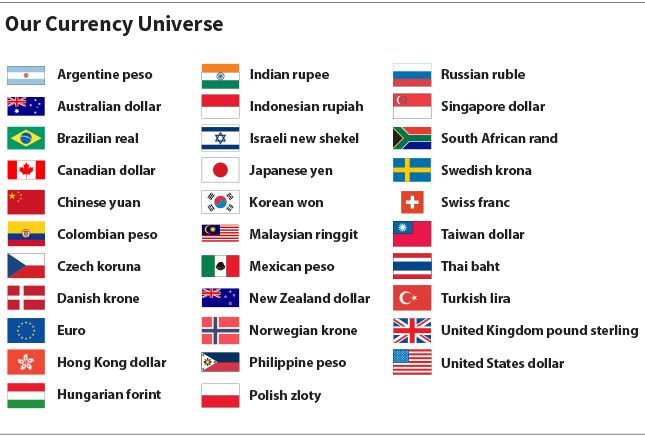
The Dynamic Allocation Strategies (DAS) team has been utilizing active currency management for many years, and we hope to educate investors that active currency management can add value, especially when combined in a portfolio with equity and bond exposures.
Due to lack of information and/or negative coverage from the mainstream press, the marginal investor has tended to shy away from currencies as an active approach in a portfolio. This negative view has perpetuated currencies as being risky, illiquid, unpredictable, and manipulated by forces outside the market.
But to us, that is simply not the case.
The currency markets, for example, are far and away the most liquid of all the markets. For instance, the 2016 average daily trading volume for currency markets was more than $5 trillion whereas U.S. bond markets' daily volume stood at $771 billion and global equity markets were a bit more than $310 billion. That's enormous, and it speaks to the depth of the liquidity in the currency marketplace.
And, contrary to popular opinion, currencies certainly are predictable. Most investors understand that equities and bonds have a fundamental value—a center of “gravity” to which price converges over time. Prices can fluctuate on either side of fundamental value based on various influences, but they always have a tendency to revert back to it. The same is true of currencies. The real exchange rate—the amount of goods that can be bought with one currency versus another—ultimately gravitates to a fundamental value as well. For currencies, fundamental value is a combination of relative purchasing power and interest rate differential.
Another widely held belief concerning currency management is that, over the long-term, it is a zero-sum game. This is true—currencies have no risk premia and, therefore, there is no passive return from holding currencies indefinitely. What this means is that all return from currencies is active return and relies on the ability to identify shorter-term opportunities that can be exploited. Our approach is neither narrow nor singularly focused on only a handful of currencies. In fact, we seek opportunities across a broad universe of more than 30 currencies.
Further, we do not evaluate currencies against one another. Instead, we view the attractiveness of each currency against every other currency in the universe. In other words, we do not ask whether the euro is cheaper or more expensive than the Swiss franc, for example, rather we ask whether the euro is attractive or unattractive relative to the other 30-plus currencies in our universe.
Additionally, the fundamental approach we take when evaluating currency opportunities is also unique. Many other managers have short-term, momentum-oriented, or trend-following approaches that rely solely on systematic modeling. We are not systematic and we are not short-term oriented; instead we take a longer-term, fundamental approach. To determine fundamental value, we use a relative purchasing power parity framework, which is a methodology in which exchange rates find their fundamental value and equalize the prices of goods and services in different countries. I explained relative purchasing power parity in more detail in a prior post.
Currencies: Half Our Active Risk
Lastly, the fact that we make considerable use of currencies is also notable. Active currency management is not something we do on the margin that fills in gaps in a portfolio—on average, it represents a significant portion of our forward-looking active risk in the portfolio. And with that expectation, we will also dynamically manage this risk. In other words, we will take more or less currency risk depending on the opportunities within our landscape.
Thomas Clarke, Partner
Portfolio Manager
William Blair Investment Management
Tipp: Dieser Beitrag ist auch im "Investment Insights"-Blog von William Blair verfügbar.
William Blair Updates per E-Mail erhalten


